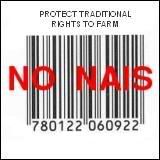Compass Points

Compass Points
The Pessimist complains about the wind, the Optimist expects it to change and the REALIST adjusts his sails.
I’ve often considered myself an optimist with realistic expectations. This outlook has always worked well for me and weathered many of the ‘storms of life’. This post is a mater of “just checking in” to review some of the thoughts here at the Holtzman Household.
I’ve been studying out some of the issues regarding homesteading as of late, updating, purging and adding to my files. A healthy review of needs vs. wants, a written timetable and proper goal setting is necessary for one wishing to peruse their aspirations. It’s been often said by many others that a proper goal is dream with an attached date to it. Things turn out the best for the people who make the best of the way things turn out. A lack of flexibility is what leads to failure and undue bitter disappointment in ones self and others when less consideration is given to the process then the prospect of the goal. How many an adult has heard (with annoying inflection of tone) “Are we there yet?”
Refinement and at times a retooling (to use an industrial analogy) are sometimes necessary along the way to get from ‘concept’ to creation. Shedding of the ‘un-necessaries’ along the way, once thought essential, is a rewarding experience toward a simpler way of being and living “the good life” fulfilling, content and joyous beyond what one could conceive and/or imagine. These necessaries mind you need not be materialistic in nature, the relief of a burdensome predisposition to a preconceived way of thinking, once thought to be correct, then found wanting and in need of change or discard is of equal weight to that which we might carry along the way. (Matthew 11:29-30)
Our current home is for lack of a better analogy is a 'working lab' of sorts. It is where we are giving trial runs to real world applications for our future homesteading goals. Our recent projects include Bio-Diesel (which may be soon abandoned or modified in application and use), photovoltaic production as a source of energy (limited use applications), seed saving and crop planting & rotation for small scale sustainable agriculture, and two new projects that begin this week raising poultry and vermiculture (worm farming). We are studying out some various building material concepts & applications, but these are just in the “hopper” or thought stages currently along with some cattle considerations and other small farm husbandry.
Now before the jokes start flying and you send in email about “our herd” or the “Great Worm Round Ups!” (laughing at myself) one of the considerations for this lab-test experiment is for soil study and feed applications. Most of what we do here currently is “small scale” and helps in the process of elimination or adaptation to our future model of use and application.
Chickens will be our first livestock. In fact we’ve never raised chickens! So, with fear & trepidation we move forward, one step at a time. We ordered 18 hatching eggs (Rhode Island Reds) that should arrive Tuesday, barrowed an incubator from a ‘farm friend’ of ours and will hope for the best! We are hoping for three to five layers out of the batch, the roosters and rest to go to our lender of equipment which helps reduce the inputs and shares in the fun. One of the things we are grateful for in this online agrarian community is how many of you have influenced our thought process with farming concepts. Much of how I now think in terms of economic viability is terms of “inputs” and “outputs” – real simple. I like that type of math and accounting. It helps clarify decisions ‘right quick’ on whether something is going to work for us or burden & hinder us with unnecessary costs or expenditure in labors outside or ancillary to our goals of operation.
As Tom put it in his plain talk conversation, don’t think we’re all about money – we’re not. It is the intangibles we’re after as much as economic factors. For example, originally, I was going to build an incubator out of the ‘junk pile’ here at the house, which I refer to as our “Refuse Relocation Project”. (My wife she calls it “the basement”, narrow thinking – Grin!) Then the thought came to include a bit of community outreach and ask for some help (or a loan of sorts), which turned out as a benefit to us as it reduced our “inputs” and allowed another to share in our venture. Win – Win!
Not to “count our chickens before their hatch” but total investment costs to date is$24.63. ($10.63 for 1/2 the order, (9) hatching eggs & shipping and $14.00 for one Chicken Video) Though the video does not include a section on hatching and is elementary in nature, it does cover some useful basics; to include culling and dressing the birds. I will need to source out some additional information on raising poultry and associated feed issues. Some of our associated feed cost will be covered by “Our Herd” of worms for sure. We’ll let you know how it goes…..


3 Comments:
Hi Scott,
I assume by now you got your eggs. Chickens are great. They have worked very well for us. We always enjoy watching them scratch and peck around the yard. An excellent form of entertainment. All animals are fun to watch but, it seems chickens are always busy doing something.
Also, it is nice to have your own farm fresh eggs. We have enough layers to sell the surplus besides, which helps pay for the feed. Economically speaking chickens are a sound investment.
Hope the new year is treating you and your family well.
Russ
I can't wait to hear about the worms. I have 4 laying hens and really enjoy them and the eggs. I also raise a few batches of broiler chicks each year that then go to my friends pasture to grow-out. My in-town location prevents more livestock, but I'm thinking worms might be the type of "livestock" my neighbors would tolerate.
Hi Scott!
I hope that you have great success with your chicken 'experiment'. I assume you are new to the art of running an incubator. I hope you have a reference book or some first hand information.
It really is an art that Mother hens are quite gifted at. We dumb humans have to learn to keep the temperature within a very small range, keep the humidity just right and have to turn the eggs I think it is twice a day (put a pencil mark on the eggs to help you keep track).
It's lots of work but when the eggs hatch, a person feels a lot of parental pride! Once the chicks have dried and fluffed out physically dip your chicks' beaks into the water located in small chick waterers (they may drowned in large waterers) and then into their feed to teach them what and where it is. Have your heat lamp on a string to adjust up or down to regulate the proper temp. Whatever your reference guide says for temperature required--goes down each week.
Start with newspaper over the chick litter for the first 2 days so that the chicks don't eat the litter rather than the feed. You may have to change the chicks diapers (newspaper) twice a day when it gets wet or messy.
You left a comment in my blog saying that you would be interested in a copy of our January 'Country Living Skills' Workshop.
Please write to me at mountainfirekeeper@yahoo.com so that I can get your snail mail addie and that I can give you mine!
May God continue to bless you and yours! and your chickens to be!!!
Steven
P.S. Chickens are only economical if you can keep your feed cost low. If you pay lots of $$$ for store bought chicken feed all thru their lives, they will become incredibly expensive. 'Chick starter' may be a valuable investment as it is blended as a balanced diet until you gain more experience. After the first week, start introducing your chicks to small bit of green grass, plant leaves and other natural things.
Post a Comment
<< Home